African Americans in Early Edmond
The 1889 Land Run primarily attracted white settlers, and none of the few African Americans that participated settled directly inside the city limits of Edmond. The Gower and Estes families both homesteaded 160 acres near Edmond in 1889. Both families settled in areas that would eventually become part of Edmond, but no African Americans settled inside the immediate city limits of Edmond until 1891, where the population slowly began to grow.
Edmond’s early African American population consisted mostly of farmers and laborers and their families, who primarily settled in the area around Edmond or close to West Edwards Street. Throughout the early history of Edmond, the population of African Americans in the town never exceeded 501, but that was large enough to warrant the establishment of a separate school in town.
John and Ophelia Gower homesteaded 160 acres on the southwest corner of Covell and Post Roads. They ceded part of their land to create Gower Cemetery, which is located on Covell between Douglass and Post Roads. The Gowers created the cemetery to enable their African American neighbors to bury their relatives, though they did not exclude anyone who was in need of a burial plot or those who could not pay for a plot. In 1992, it became known as Gower Memorial Cemetery and was placed on the National Register of Historic Places.
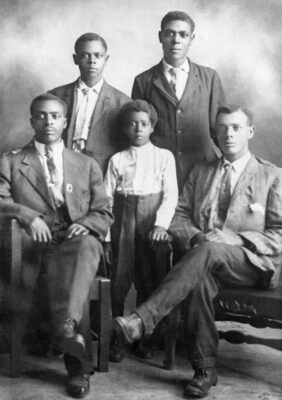
Seated from left: Willie T. Sr. and Garfield. Standing from left: Henry B., Roosevelt and Daniel. Willie T. took over responsibility for the cemetery after his father passed away.
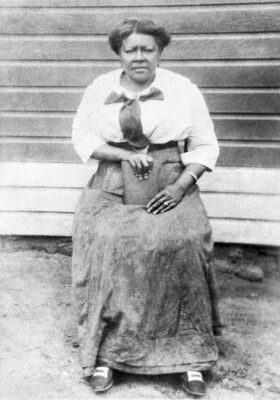
The Estes Family
Jeff and Dollie Estes left Missouri and came to the area Edmond in 1889, homesteading 160 acres east of Edmond at the northeast corner of 2nd St. and Douglas Blvd., close to the nearby town of Arcadia. The Estes family eventually moved to Edmond proper, living first on West Main St., and later moving to West Edwards Street. Dollie Estes’s parents, Press and Millie Thomas, then followed the Estes family to Oklahoma County from Missouri. Other African American families in Edmond at the time included the Covingtons and the Veaseys.2
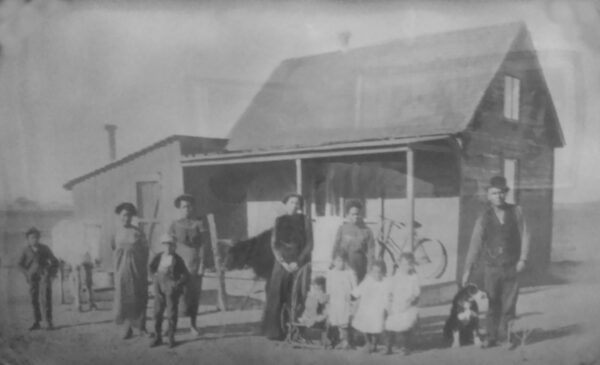
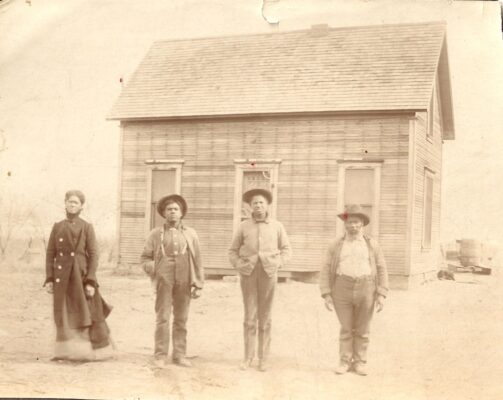
Jeff Estes died unexpectedly in February 1905 and left behind a large family with ten children. The Edmond Enterprise newspaper reported that Dr. Flesher, a prominent white physician who practiced in Edmond from 1901 until his death in 1953, treated Estes in the afternoon before he passed away that night. It is unknown how common it was for white physicians to treat African Americans in Edmond at this time, or if this was something that rarely happened. Furthermore, after Estes’s funeral, his widow and immediate family published an article in the Edmond Enterprise thanking all of their “white and colored” friends for their support. The article specifically mentions numerous prominent, white Edmond citizens that donated money, coal, or other funeral-related services.
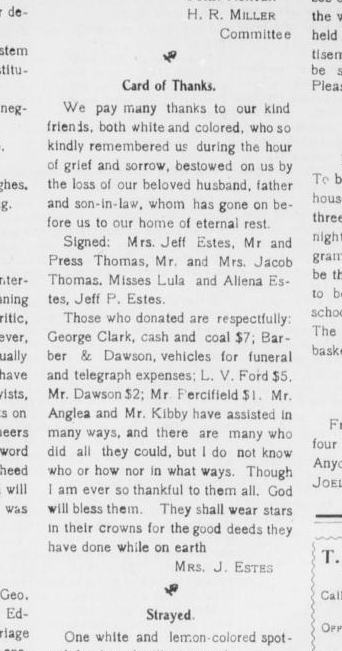
(Above) Article from the February 23, 1905 issue of the Edmond Enterprise after Jeff Estes’s funeral. Prominent white citizens that Dollie Estes thanked included Barber & Dawson, who owned a large livery stable on 2nd Street; L.V. Ford, who was Mayor of Edmond in 1904-1905; and Mr. Anglea, although it’s unclear if she is referring to Hardy C. Anglea who was one of Edmond’s first residents or his brother, John Anglea, who would go on to build what is now known as the “Angel House” at Main St. and Boulevard.
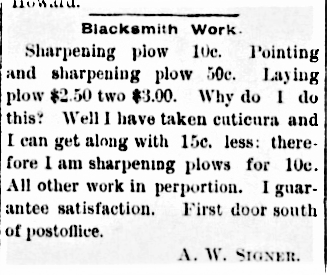
Pennsylvania born Andrew W. Signer was one of Edmond’s first African-American residents.
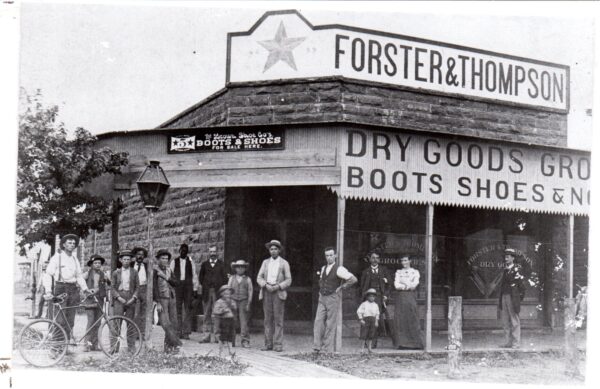
This photo is one of the rare surviving photographs of African Americans in early Edmond and possibly the only surviving photo of African Americans in downtown Edmond around the turn of the century. This store was located on the SE corner of 2nd & Broadway, only about five blocks away from Edmond’s separate school at 14 West Edwards Street. Photo is from the Edmond History Museum’s collection.
Edmond’s African American population slowly started to decrease shortly after the turn of the century. Edmond lacked the racial violence seen in other areas of the state, and rather it was mostly a lack of opportunity in Edmond that drove them elsewhere. As segregationist efforts throughout the territorial government increased in the early 1900s, the large, established African American communities in Oklahoma City, Guthrie, and Tulsa proved to be much more attractive.3
- Lehman, Christopher P. “West Edwards Days: African Americans in Territorial Edmond.” The Chronicles of Oklahoma, vol. 97, no. 2 (Summer 2019): 174-191. https://www.okhistory.org/publications/chroniclesok/COO97-2Lehman.pdf
- Ibid.
- Ibid.
